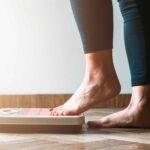7 Best Exercises to Lose Weight at Home
Introduction
Regular physical activity is a vital component of maintaining overall health. Exercise supports cardiovascular health, bone strength, mood regulation, and general well-being in addition to weight management. It is important to understand that both exercise and diet work together to support sustainable weight management. The body’s response may vary if one is prioritized while the other is neglected, such as regularly exercising without dietary changes or following a diet that does not include physical activity. This could lead to slower progress, fatigue, or changes in metabolism.
Additionally, other factors such as sleep quality, stress levels, certain medical conditions (e.g., hypothyroidism, polycystic ovary syndrome), and medications can influence how the body responds to efforts aimed at weight loss.
For individuals diagnosed with conditions such as diabetes, incorporating exercises for diabetes which are appropriate to their health status can be beneficial. However, any exercise regimen should be discussed with a healthcare provider to ensure safety and effectiveness.
7 Best Exercises to Lose Weight at Home
Here, we outline seven effective and popular exercise programmes that can be practised at home, helping you improve strength, fitness, and overall wellbeing, without the need for gym access or specialised equipment.
When combined with a well-balanced, low-calorie diet, a combination of cardiovascular exercise and resistance training can help people who want to control their weight. Incorporating resistance training at least twice a week may help maintain muscle mass during weight loss.
Some studies have looked into whether working out in the morning, for example, has an effect on muscle growth or weight loss2. Cortisol, a hormone that follows a natural daily rhythm, typically peaks in the early morning. However, its effects are complex. Under stress, elevated cortisol levels may occasionally contribute to muscle breakdown and fat retention. Current evidence does not conclusively support a “best” time of day for exercise that applies to everyone.
1. Aerobic Exercises
Walking is widely regarded as a low-impact, accessible cardiovascular exercise option. When performed at a brisk pace, it can support calorie expenditure and be easily integrated into daily routines. It is also gentle on the joints, making it suitable for individuals across a wide range of fitness levels.
Some observational studies have noted that individuals who walk for 50–70 minutes, three times per week, may experience modest reductions in body fat and waist circumference over time. However, results can vary depending on individual factors such as diet, metabolism, and overall activity levels.
Running and jogging are more intense forms of aerobic exercise that require higher intensity levels. These activities primarily engage the lower body and cardiovascular system, and they may contribute to improved endurance, heart health, and calorie expenditure. The main difference between running and jogging is the speed; running typically starts at around 10 kilometers per hour, whereas jogging typically ranges from 6 to 9 kilometers per hour. On average, a person may burn approximately 298 calories in 30 minutes of jogging and 372 calories in 30 minutes of running, though actual figures depend on body weight, intensity, and terrain. While these exercises can assist in reducing overall body fat, it is important to note that fat loss from specific areas, such as the abdomen cannot be targeted directly and depends on total fat reduction and individual physiology3.
Jogging and running can help maintain muscle tone, especially in the lower body, but resistance training or structured strength-based workouts are usually needed to make significant gains in muscular strength.
Exercise Pattern
Set aside 1 hour of your time and include these exercises in your routine.
Begin by exercising for 15 minutes by walking. Increase your pace and start jogging for the next 15 minutes.
With a constant increase in pace, run for another 15 minutes.
Return to jogging for 10 minutes at a slower pace. Relax your body and slow down your pace and walk for 5 minutes.
2. Skipping or Jumping Rope
While skipping can assist with muscle toning and calorie expenditure, significant muscle strength gains require dedicated resistance training. It may also support mood and stress management, but it is not a substitute for professional mental health care4.
As with any exercise, individual results may vary depending on fitness level, diet, and consistency.
Exercise Pattern
On a flat surface, stand with your back straight.
Make sure your feet are together and pointing straight.
Keep your hand straight pointing downwards close to your thighs.
Jump off the ground and let your rope pass under your feet and bring it back.
Repeat these steps and increase your jumping speed consistently.
3. Planks
The plank is a core stabilisation exercise that targets multiple muscle groups including the abdominals, shoulders, back, chest, and hips. Though it appears simple, it requires muscular endurance and can be physically demanding when performed correctly.
Planks help improve core strength, posture, and body balance, and come in various forms to target different muscle areas. While not designed for high calorie burn or direct fat loss, planks are valuable for enhancing overall stability and muscular endurance5.
Increasing the duration and consistency of plank practice may lead to better functional strength and support in other forms of exercise.
Variations on the Plank Exercise The Standard Plank: It is also known as The Extended Arms Plank, this exercise is particularly suitable for beginners aiming to strengthen their core muscles. It is beneficial for enhancing metabolic activity and aiding digestion. A similar variation is the Forearm Plank, which targets the same muscle groups. This workout primarily focuses on strengthening the core, arms, shoulders, and back.
The Mountain Climbers: Recognised as a more intense variation of plank exercises, Mountain Climbers provide a full-body workout that helps burn excess calories and reduce body fat. The key muscle groups engaged during this exercise include the biceps, hamstrings, core, triceps, and chest.
Exercise Pattern
Start in a push-up position, also referred to as the standard plank position.
Bend your right knee and bring it towards your chest.
Extend your right leg back to the starting position.
Repeat the movement with your left knee, drawing it towards your chest.
Return your left leg to the starting position.
Continue alternating legs for approximately 20 to 25 repetitions.
The Reverse Plank is a variation of the standard plank that is done in the opposite direction. It is an excellent way to stretch the body while also helping to reduce excess fat and calories. Additionally, this workout strengthens the core, shoulders, back, chest, and gluteal muscles.
Exercise Pattern
Sit down and extend your legs in front of you.
Place your hands behind your hips for your upper body support.
Now, lift your hips by straightening your hand and align your body in a straight line. Hold this position for 40-60 seconds.
Approximately 20 to 30 times, repeat these procedures and steps. 4. Push-Ups and Pull-Ups
Push-ups are a widely practised bodyweight strength exercise that require no equipment and can be performed virtually anywhere. They primarily target the chest, triceps, shoulders, and core, helping to build upper body strength and muscular endurance.
While push-ups do not burn as many calories as aerobic exercises, they contribute to muscle development, which may support long-term weight management by modestly increasing resting metabolic rate6.
Regular push-up training can improve overall physical stability and strength, particularly when combined with other forms of exercise such as cardio or resistance training.
Exercise Pattern
Choose an anti-slippery and flat surfaces.
With your hands slightly wider than your shoulders, face forward. Now lift your hips by straightening your hand and form a straight line with your body.
Now bend your shoulders as low as possible towards the floor, push back, and straighten your arms.
Repeat these steps for 15 reps and 3 sets.
Push-ups are a widely practised bodyweight strength exercise that require no equipment and can be performed anywhere. They primarily target the chest, triceps, shoulders, and core, contributing to the development of upper body strength and enhancing muscular endurance.
While push-ups do not burn as many calories as aerobic exercises, they contribute to muscle development, which may support long-term weight management by modestly increasing resting metabolic rate.
Regular push-up training can improve overall physical stability and strength, particularly when combined with other forms of exercise such as cardio or resistance training.
Exercise Pattern
Stand upright and grip the pull-up bar with your arms fully extended.
Bend your knees slightly and pull yourself upward until your chin rises above the bar.
Lower yourself slowly back to the starting position with control.
Repeat this movement for 15 repetitions and complete 4 sets.
5. Squats
Squats are a lower-body strength exercise that primarily target the thighs, hips, and glutes. They help improve mobility, balance, and muscular endurance, making them a fundamental part of many fitness routines.
While squats may contribute to calorie expenditure and muscle toning, their main benefit lies in strengthening the lower body. Beginners are often advised to start with 3 sets of 12–15 repetitions, focusing on proper form to avoid injury and maximise effectiveness7.




